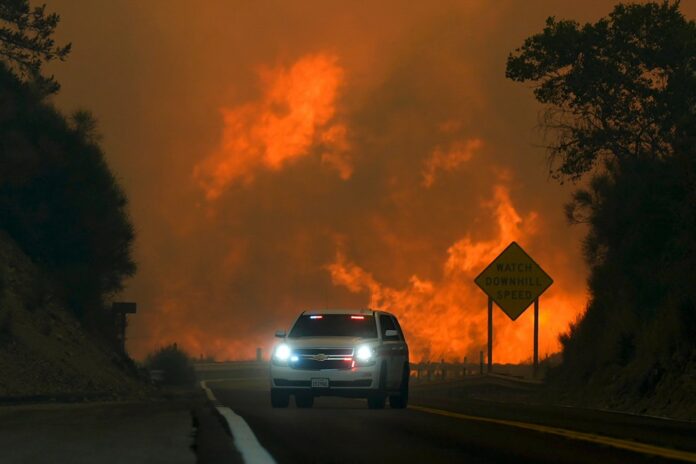
It doesn’t take a climate scientist to tell you that wildfires are wreaking havoc on large swaths of the country. Propelled by a warming climate, poor forest management practices, a lack of adequate risk mitigation strategies, and questionable decision-making by some Americans who choose to move to fire-prone locations, wildfires cause an enormous amount of property damage yearly. The way to address this problem is not by introducing more rules and regulations but by allowing insurance prices to reflect risk adequately.
According to the National Interagency Coordination Center, in 2023, U.S. wildfires scorched nearly 2,700,000 acres nationally and destroyed 4,312 structures — 3,060 of which were private residences. This property damage, which the National Oceanic and Atmospheric Administration estimates totaled $9 billion, puts an undue burden on the property and casualty insurance market.
In most cases, property insurance covers fire damage, including wildfires. Insurers in many states have been forced to raise insurance rates, limit or pause writing new policies, and, in extreme circumstances, pull out of the market to compensate for growing losses. These developments have spurred policymakers at all levels of government to propose a wide range of legislative and regulatory solutions to reduce rates and stabilize the insurance market. The problem is that many of these solutions are uniquely bad and can have severe consequences for consumers.
Some state regulators have piled more onerous regulations onto insurers. A new state plan in California will require insurers to write more policies and expand coverage into more fire-prone locations. Ironically, plans like California’s tend to add to the financial burden insurers already feel from existing regulations and do nothing to reduce homeowners’ exposure to wildfires, reduce property losses and keep insurers in the state.
Other problematic proposals revolve around states establishing new or expanding existing state-chartered insurance programs. These state-run programs insure property owners who, in theory, cannot obtain traditional coverage from private insurance companies. The problem with these programs is that while many were initially designed to serve as a backstop for the public so that insurance is available in high-risk areas, most have — over time — evolved to cover risk that isn’t even insured in the private market, or is already attainable for a price.
These programs are “increasingly viewed as tools for promoting economic development.” However, history shows that these “insurers of last resort” are known to lose money, putting homeowners and taxpayers at risk for covering these losses. As these state-run insurers grow, the competitive market shrinks and private capital leaves the state.
Even more troubling are federal proposals. Despite property insurance being primarily regulated at the state level and the health of the insurance market varying significantly from state to state, some policymakers have proposed national solutions to localized problems.
One noteworthy example is Rep. Adam Schiff, D-Calif., and his legislative proposal, Incorporating National Support for Unprecedented Risks and Emergencies Act (INSURE). First proposed in January, this act would create a federal reinsurance mechanism to cover “an array of cat perils, including wind, wildfire, severe convective storms, flood and earthquake.”
The hope is that such a mechanism would serve as a federal source of emergency funds for insurers during natural disasters and take pressure off the home insurance market. In effect, the program would operate as a federal insurer for insurers.
While well-intentioned, a federal $50 billion reinsurance program is unnecessary and unlikely to tackle the primary causes of rising rates — everything from poor mitigation strategies and inflationary pressures to abuse of the legal system and outdated regulations. Federal solutions to a state-regulated industry will likely make things worse and leave taxpayers on the hook for potentially significant liabilities, just as the National Flood Insurance Program has done with previous bailouts and more than $20 billion in existing debt.
Property damage from wildfires is a legitimate problem that must be addressed, but more government regulations at either the federal or state level are not the answer. Instead, policymakers should remove any unnecessary regulatory barriers and focus on common-sense, bottom-up solutions that encourage private-sector innovation and promote greater public education about the perils of buying in high-risk locations. They should also endorse research-based risk-mitigation strategies like home hardening, which utilizes fire-resistant construction materials and drought-tolerant landscaping, and encourage better forest management practices like forest thinning and prescribed burns to reduce the likelihood of explosive wildfires.
Sound mitigation strategies and competitive risk-based pricing are the answer, not price controls, that will lead to insurance shortages.
Nate Scherer is a policy analyst with the American Consumer Institute/InsideSources



